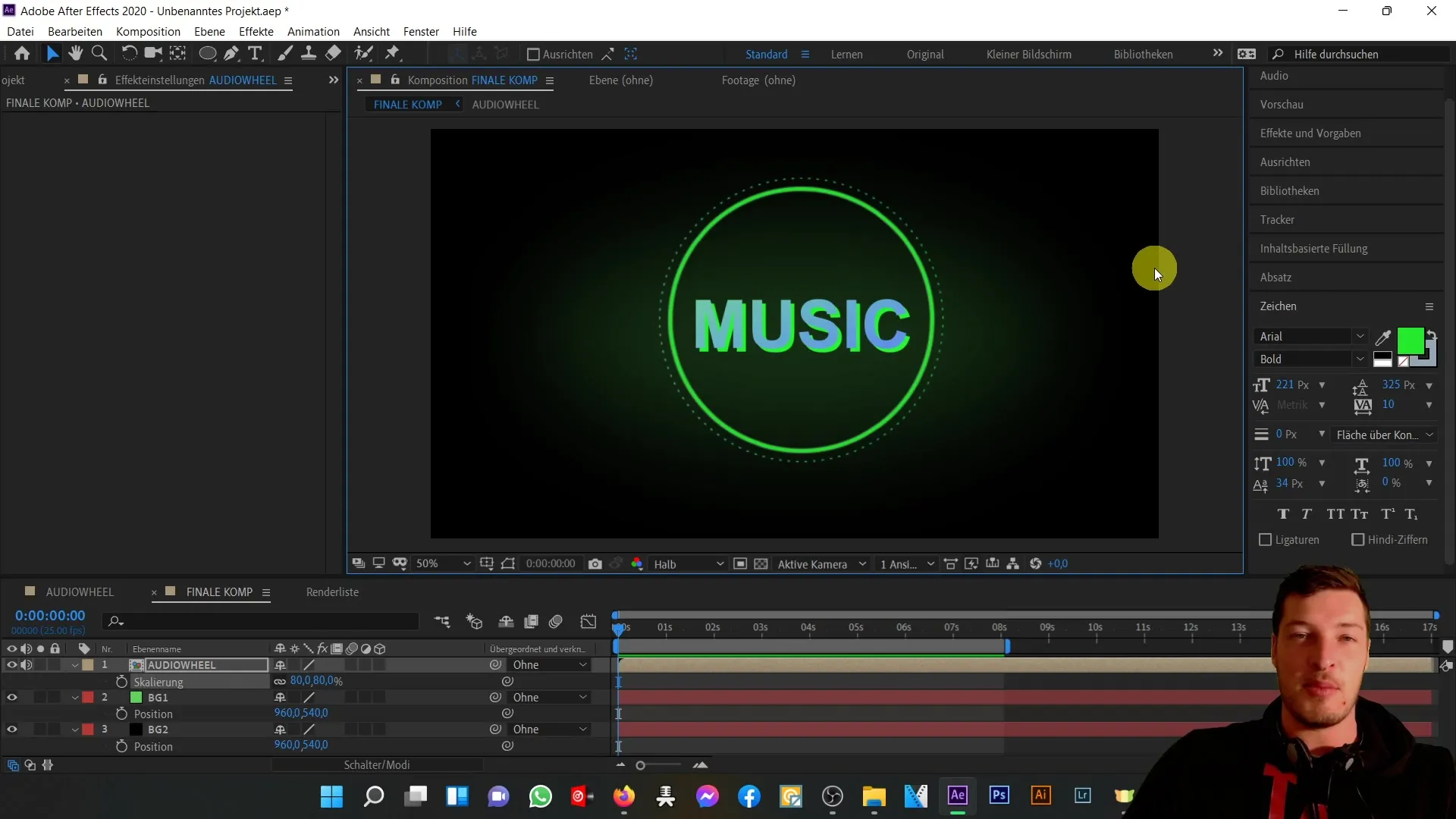You want to bring your creative ideas to life in moving images and visualize the dynamics of an audio file? In this guide, you will learn how to animate an audio file with Adobe After Effects and at the same time acquire new techniques such as working with expressions. By the end, you will be able to effectively synchronize effects and animations to the beat of your music.
Key Takeaways
- You'll learn how to work with expressions in After Effects.
- You'll discover how to turn audio files into visual effects.
- You'll get an overview of practical applications of After Effects.
Step-by-Step Guide
First, open Adobe After Effects and create a new project. This is the first step to realizing your creative vision. Have the MP3 file that you want to animate already downloaded beforehand, as you will import it later.

To import your audio file, navigate to "File" > "Import." Choose the MP3 file from the course materials and add it to your project. Then, drag the audio file onto the timeline so you can use it for animation.
Now that the audio file is in your project, you can begin working. First, listen to the file and identify the desired beats you want to animate. It is important to know exactly which parts of the music you want to translate into visual animations.
Once you have identified the beats, it's time to work with expressions. This allows you to automatically control and link parameters. Choose an element in your composition that you want to animate, such as a shape or text. Press 'Alt' and click on the stopwatch icon next to the property you want to animate to open a text field for the expression.
In the expressions box, enter a simple command that responds to the audio file, such as "loopOut()" to achieve a continuous effect. Experiment with different commands to achieve the desired result. Here, you have the opportunity to generate extremely creative animations.
Now it's time to refine your animations. Play around with the keyframes and various effects of After Effects. Make the animation dynamic and eye-catching. Also, use color adjustments and motion effects to intensify the connection to the music.
If everything looks good, the final step is to render and export your animation. Navigate to "Composition" > "Add to Render Queue." Choose the desired output settings and location. Soon, you will have your finished product in hand - a creative animation that captures the essence of your audio file.
Summary
In this step-by-step guide, you have learned how to visually animate an audio file with Adobe After Effects. From the initial import steps to applying expressions and refining the animation, you have all the necessary foundations to reflect your music with creative effects.
Frequently Asked Questions
How do I import an audio file into After Effects?Go to "File" > "Import" and select your MP3 file.
What are expressions in After Effects?Expressions are scripting functions that allow you to automate and link animation effects.
How can I export my animation?Navigate to "Composition" > "Add to Render Queue" and select the desired settings.
Can I apply multiple effects to an object?Yes, you can combine multiple effects to create unique animations.
Where can I find the MP3 file for download?The file is available in the course materials.


